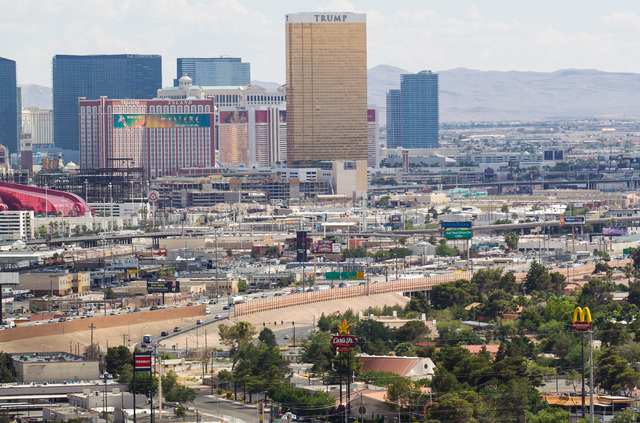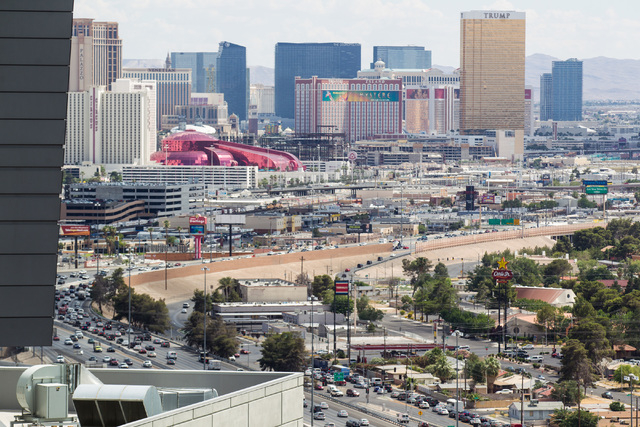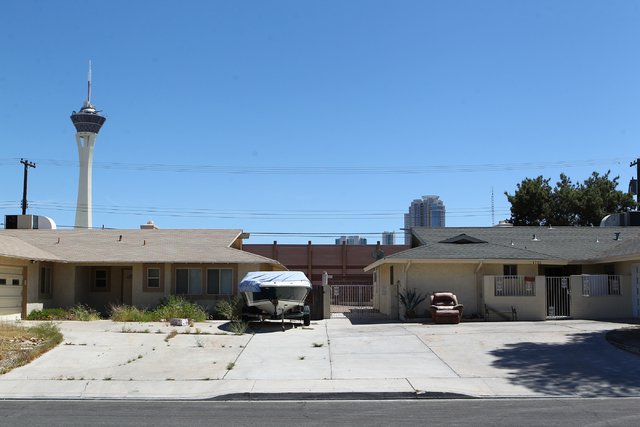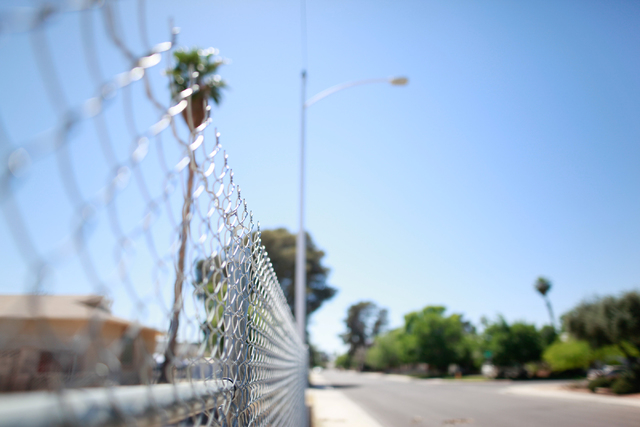State moves to condemn land for Project Neon
With construction on the massive Project Neon Spaghetti Bowl interchange scheduled to begin next year and more than 200 land parcels still needed to be acquired, the state has enlisted local lawyers and firms to handle eminent domain and condemnation proceedings.
The state Transportation Department board of directors on Monday received an update on land acquisition and approved the initiation of condemnation actions on seven parcels and their five owners.
The land the state is attempting to acquire is along the west side of Martin Luther King Boulevard, north of Charleston Boulevard. The state is offering owners a total of $11.3 million for 4.35 acres. In most cases, owners have not responded to state offers or have initiated inverse condemnation proceedings against the state to block acquisition or drive up the price.
The state asked the board for permission to proceed to keep on a construction schedule expected to begin in earnest next spring on the multi-phase $1.5 billion effort, the largest highway construction project in state history.
Rather than expand the department’s legal staff and overuse lawyers from the Attorney General’s Office, the department opted to hire outside counsel and, as of mid-June, the department had contracts for 26 cases with 11 law firms.
So far, outside counsel has cost the state $3 million in fees and legal costs for condemnation and inverse condemnation litigation.
Lt. Gov. Mark Hutchison, a member of the board, urged the department’s legal staff to handle as many of the cases as possible, but he deferred to their judgment about how often to hire outside counsel to keep the construction program on schedule.
Project Neon will add a new flyover bridge connecting northbound and southbound U.S. Highway 95 to northbound and southbound Interstate 15. It also includes a major reconfiguration of freeway access to I-15 just south of the Spaghetti Bowl.
In other business, the board got its first look at the Regional Transportation Commission of Southern Nevada’s Transportation Investment Business Plan, a series of recommendations to improve mobility in the Strip corridor.
Unveiled in late May, the plan includes a series of relatively inexpensive near-term improvements that could take one to five years to complete and three long-term improvements expected to cost billions of dollars that would take 10 to 20 years to finish.
Among the big-ticket improvements recommended are a Strip light-rail line beneath Las Vegas Boulevard, a tunnel beneath McCarran International Airport connecting Russell Road east and west of the airport, and a high-speed-rail system connecting Las Vegas and Southern California.
Among the short-term projects is the extension of the Las Vegas Monorail to link the city’s three major convention centers — Las Vegas Convention Center, the Sands Expo Center and the Mandalay Bay Convention Center.
The monorail proposal inspired Gov. Brian Sandoval, who chairs the board, to ask an often-repeated question: Why not extend the monorail to the airport?
Regional Transportation Commission general manager Tina Quigley, who offered the update to the board, said the committee of stakeholders who developed the plan believes in light-rail as the long-term solution to resort corridor transportation issues because of its flexibility to move above or below ground.
Ingrid Reisman, a spokeswoman for the Las Vegas Monorail Co., said extending the monorail to the airport is still a consideration, but the current focus in an extension to Mandalay Bay and possibly building a new station near the Sands Expo Center.
That would link the city’s major convention centers as well as connect 34,000 hotel rooms, two arenas and several dining and entertainment venues, better serving convention and leisure travel demands.
The board also received a report on the department’s pedestrian overpass project at Las Vegas Boulevard and Tropicana Avenue.
State engineers said they were amazed at how quickly the new MGM-AEG arena west of New York-New York is being built.
The $26 million refurbishment of the four pedestrian overpasses and the eight escalators that feed them with 130,000 people a day won’t start until early next year with completion by 2017, a year after the arena is scheduled to open.
But department officials hope to complete the west bridge linking Excalibur to New York-New York first, around the time the arena opens.
Follow @RickVelotta on Twitter. Contact reporter Richard N. Velotta at velotta@reviewjournal.com or 702-477-3893.
RELATED
Details of massive Project Neon unveiled
Project Neon funding moves forward























